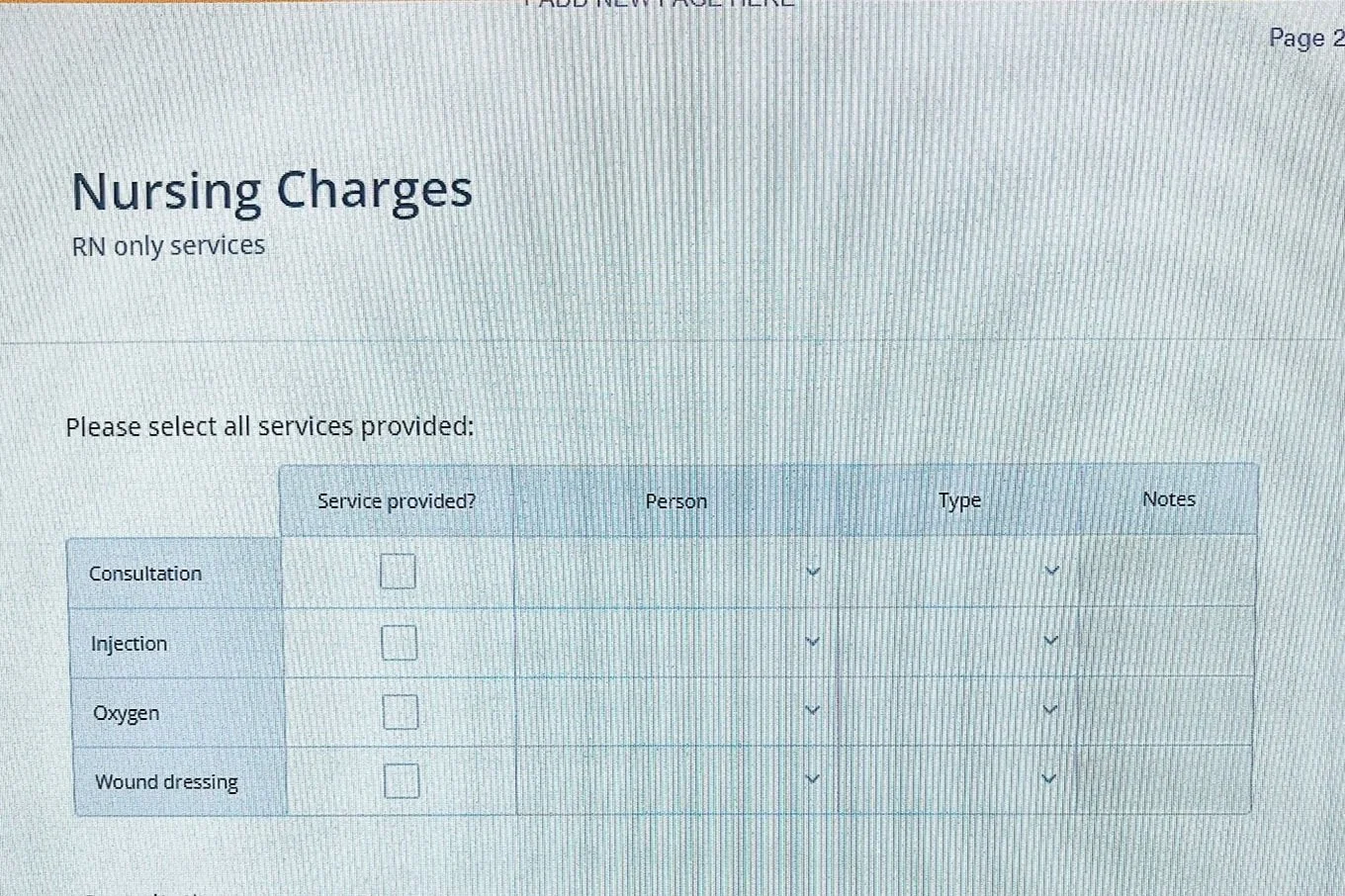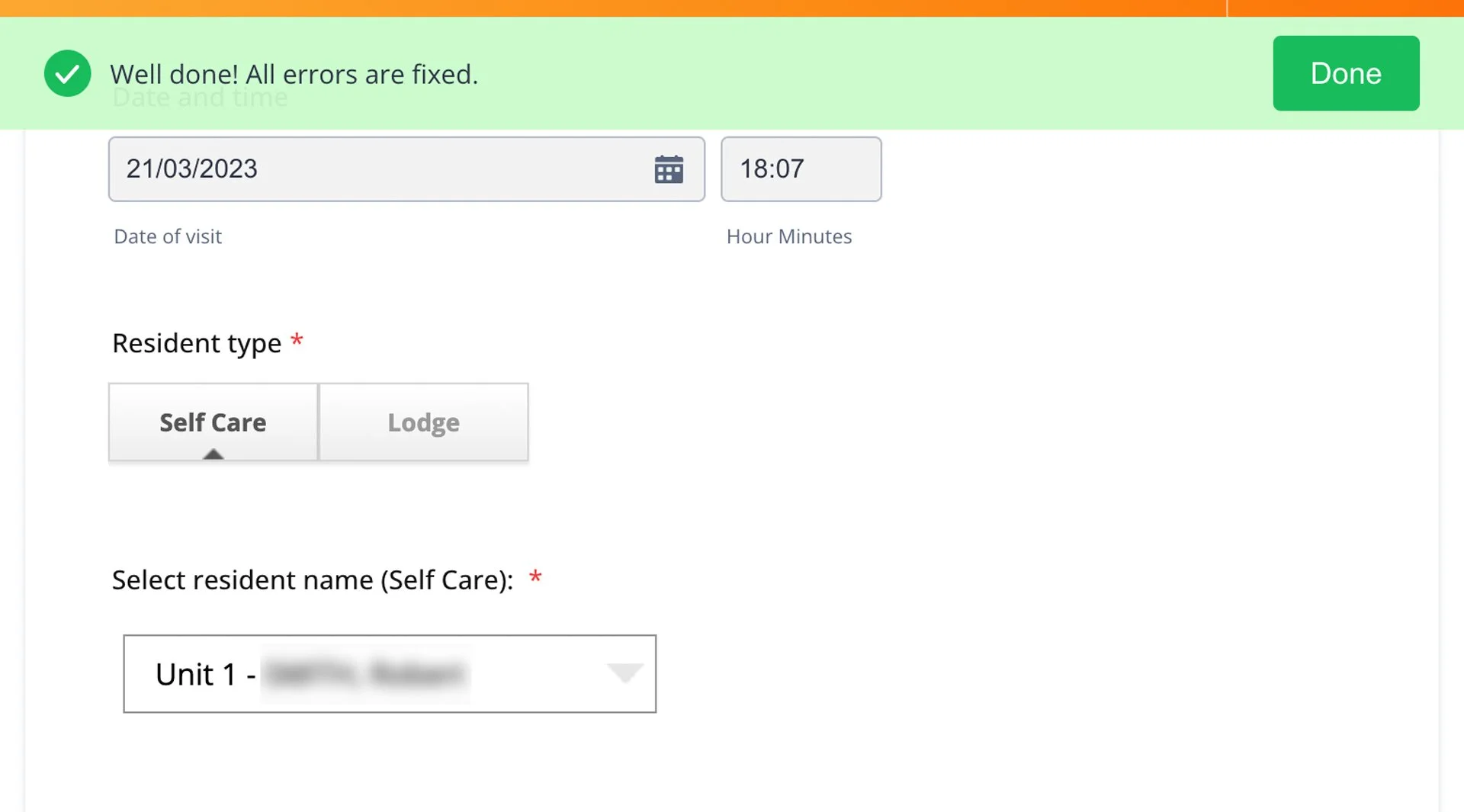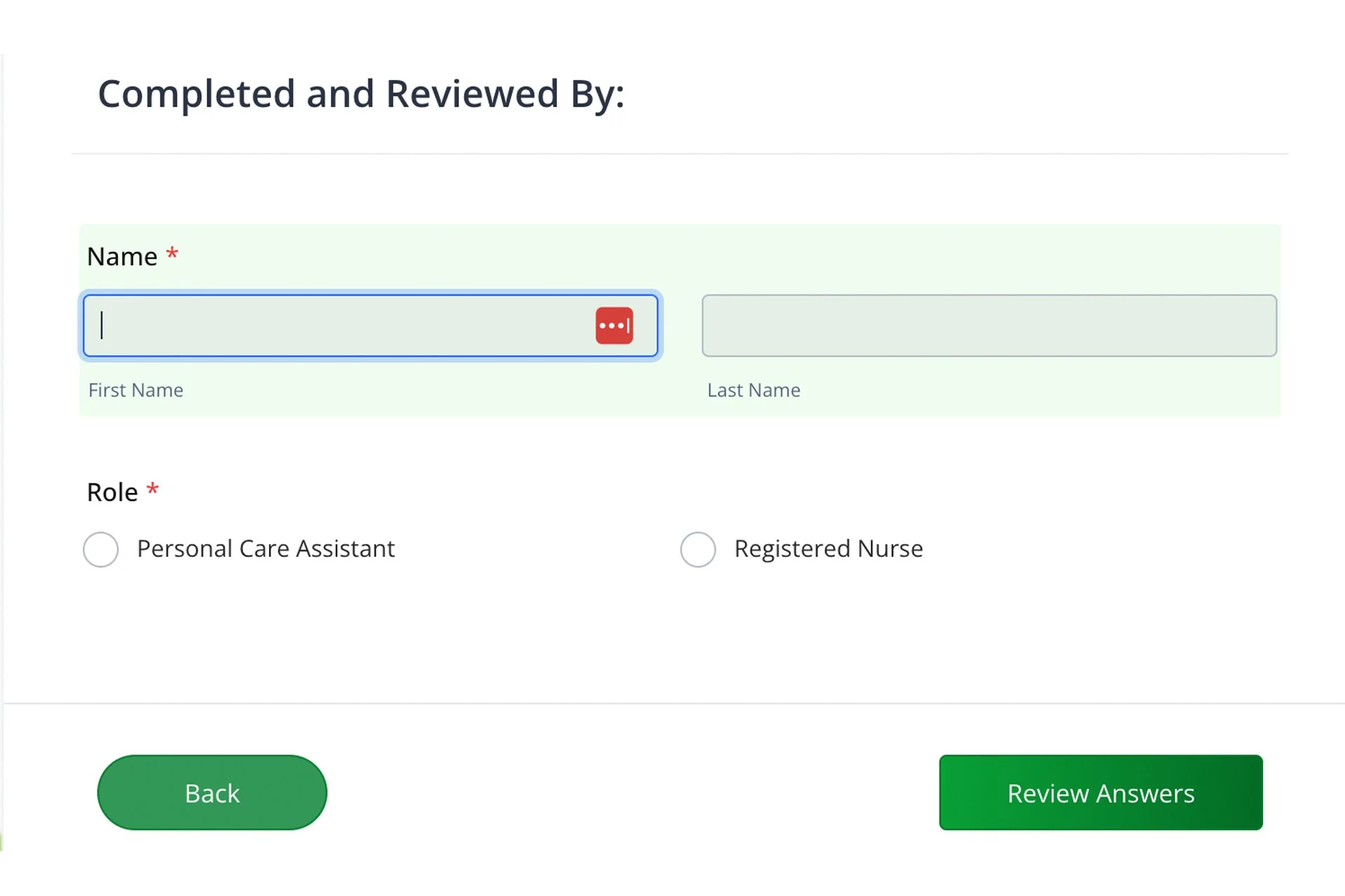Healthcare form design
How’s the interactivity? (Hint: Read like this)
Creating a data capture solution that’s intuitive and efficient to use for accurate data capture and billing purposes at a Turramurra retirement village
Client
Vision Lifestyle Projects for Huon Park
Role
Lead UX/UI Designer
UX Researcher
Project status
Complete
Year
2023
Design process
Discovering and defining
Vision Lifestyle Projects engaged me to design a service record form for use by staff at Huon Park, a retirement and independent living village in Turramurra.
The form was to be easy-to-use and accessible via desktop and tablet and simple for the nursing team to use during their shifts.
The Problem
The inaccuracy of service data recorded on paper ‘Charge Sheets’ filled out for each resident by the nursing team. This was due to changes in Aged Care legislation and to the operator of the village. As a result, the Charge Sheets no longer reflected the services available and rendered to residents;
Admin staff were required to manually input data from each Charge Sheet into a digital spreadsheet for billing, which was highly inefficient;
Inaccuracy and confusion over service offerings resulted in bill disputes with residents of the village.
My role
I was hired to design a new digital version of the Charge Sheet and make it accessible for nursing staff to use on a tablet or desktop computer. I also advocated for the needs of the care team — the main users of the new Charge Sheet — and insisted on user testing with care staff before delivering the final product.
I defined the archetypal users and created user profiles to understand user limitations, and how that would affect the form design, including shift time constraints and computer literacy. It helped me identify potential user issues in transitioning to using a digital form from the hardcopy Charge Sheets (e.g.: difficulty reading from a screen, anxiety around computer use, limited typing skills, etc.)
I spoke to the admin staff and nurses to better understand their needs for the final design solution. For instance, both admin staff and nurses spent extra time amending the Charge Sheets because staff were unclear how to categorise particular services they performed, or whether or not to note it as a charge. As a result, the admin staff also had to make decisions about how to charge for uncategorised services, further adding to their workload.
Key design requirements
Useability: Simple to use, easy access, pleasantly designed and branded to make lessen anxiety of users and assist those with lower computer literacy to keep good records.
Time constraints: Not overwhelming, not too long, fits smoothly into carer and nurse workflows.
Accuracy: Categories for services well-defined, in-built design constraints, logical form structure to limit opportunities for user error and improve accuracy of records for efficient billing.
Developing
After my research, I concluded it would be best to create ONE universal digital (Jot)form for both carers and nurses to fill out, that would be accessed via an app, right from the ‘Home’ screen of the tablets village management specified for the care team to use. To allow for the extra service categories included on the nurse Charge Sheet, the form would be split into tabs, including one for services only performed by a registered nurse, that carers could ‘skip’ to minimise unnecessary time spent on the form. Data from form submissions would be categorised within Jotform or exported to a custom Excel spreadsheet or similar for the admin team to efficiently bill residents each month.
Process









